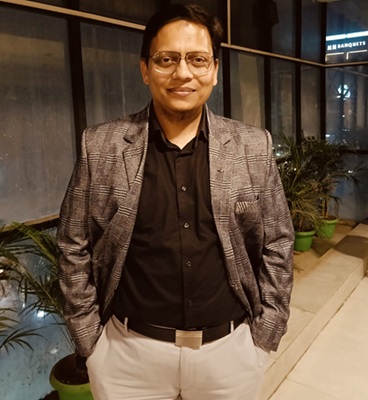By Saket Suman,
New Delhi, (IANS) : Literary collaborations remain an area less explored in Indian publishing, but bestselling author Ashwin Sanghi, who, along with James Patterson, has penned “Private Delhi”, says that while no successful writer may necessarily need another of his kind, it is the creative process that makes the exercise worthwhile.
“Writing is more about the journey than the destination. Working in a collaborative effort to craft a perfect crime thriller is challenging and enjoyable. So while it is true that neither James Patterson needs me nor do I need him, it is the creative process that makes it worthwhile,” Sanghi told IANS in an interview.
Sanghi is counted among India’s highest-selling English fiction authors. On the other hand, Patterson’s books have sold in excess of 325 million copies worldwide. Blockbuster authors in their own rights, the two have together written this deadly concoction of murder and corruption at the highest level in the thrilling novel.
“Writing thrillers is not only about inspiration and imagination but also about craft. This is something that one realises working alongside James. There are a few simple rules that make a good thriller: amplify character traits — make them larger than life; eliminate fluff; build twists and suspense ever so often; never compromise on pace; build conflict until the very end. Achieve these few objectives and you should have a delicious thriller.
“Research and plotting are my strengths. With James, it’s about further refining the story so that it is almost Zen minimalism. But with that comes a certain darkness that is perfect for thrillers,” Sanghi said.
However, it is not as easy as it may seem. Sanghi is based in India and Patterson in the US. How did the collaboration work? Sanghi said that they did not work on different parts of the book — both of them worked on the entire book but at different points of time.
“The starting point is an outline. The outline usually comes from James Patterson, but in both the India-based books he leaves the outlines to me. The outline tends to be a roadmap with every twist and turn plotted in. This outline is then discussed between both writers and a revised outline that incorporates changes is drawn up.
“The first draft of this story was written by me but the second and third drafts were written by James Patterson. I would say that I bring the story idea, the research as well as the Indian touch to the story. James Patterson brings his uncanny ability to amplify characters and stretch the suspense,” he said.
Sanghi further said that collaborations are a great way to foster innovation and that he looks at it as singing a duet instead of singing solo.
“A duet involves two people singing different notes but the end result is harmonious if both singers are disciplined and stick to the plan,” he added.
For those wondering about how this latest title, written with Patterson, is different from other books by Sanghi, the author said: “Both ‘Private India’ (the first book that James Patterson and I wrote together) and ‘Private Delhi’ are far shorter than my books in the Bharat series such as ‘The Rozabal Line’, ‘Chanakya’s Chant’, ‘The Krishna Key’ or ‘The Sialkot Saga’. Most of those books draw heavily from theology, history or mythology, whereas these books are much more rooted in the present.”
Although widely popular, Patterson has been criticised for co-authoring many of his books and for being more of a brand that focuses on making money than an artist who focuses on his craft. Responding to a question on whether or not collaborations are a setback to the natural essence of a writer’s work, Sanghi said it is far easier to write solo than in a collaboration.
“But the fact is that a collaboration allows one to combine the distinct strengths of two writers. It’s always a pleasure to collaborate with James Patterson. He has the knack of instilling the extra chills and thrills that keep one on the edge of the seat. Moreover, given that this was the second book that we collaborated on, the process became even easier because we understood the specific strengths that each one brought to the mix.
“Considering the fact that a story like this one goes through three drafts and another three stages of editing, both writers have adequate opportunity to reflect and comment on the other’s work,” said Sanghi.
Giving a glimpse into the fictional world that the two writers have created in “Private Delhi”, Sanghi said: “There is an old proverb which says that if you are going to tell a lie, then lie as close to the truth as possible.”
“Depicting a realistic sense of Delhi allows the reader to experience a fictional story as though it is almost factual, from the front pages of your newspaper. The story moves at lightning speed and every few pages you are shocked by a sensational twist. I like to think of this book as a rollercoaster ride!”
(Saket Suman can be contacted at saket.s@ians.in)






0 Comments